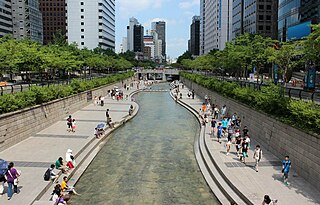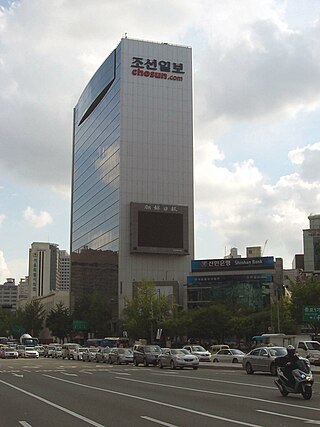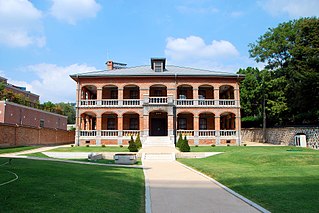Self-guided Sightseeing Tour #11 in Seoul, South Korea
Legend
Guided Free Walking Tours
Book free guided walking tours in Seoul.
Guided Sightseeing Tours
Book guided sightseeing tours and activities in Seoul.
Tour Facts
5.9 km
157 m
Experience Seoul in South Korea in a whole new way with our self-guided sightseeing tour. This site not only offers you practical information and insider tips, but also a rich variety of activities and sights you shouldn't miss. Whether you love art and culture, want to explore historical sites or simply want to experience the vibrant atmosphere of a lively city - you'll find everything you need for your personal adventure here.
Activities in SeoulIndividual Sights in SeoulSight 1: Heunginjimun Gate
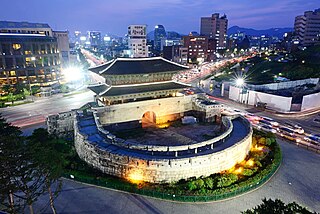
Heunginjimun, more commonly known as Dongdaemun, is one of The Eight Gates of Seoul in the Fortress Wall of Seoul, a prominent landmark in central Seoul, South Korea. The Korean name "Dongdaemun" means "Great East Gate," and it was so named because it was the major eastern gate in the wall that surrounded Seoul during the Joseon Dynasty. The gate is located at Jongno 6-ga in Jongno-gu.
Sight 2: Cheonggyecheon Stream Park
Cheonggyecheon is a 10.9-kilometre-long (6.8 mi) stream and public space in downtown Seoul, South Korea. A natural stream sourced from the Suseongdong Valley in Inwangsan, it was historically maintained as part of Seoul's early sewerage until the mid-20th century, when post-Korean War rapid economic development and deteriorating conditions prompted the filling of the stream with concrete and the construction of an elevated freeway, the Cheonggye Expressway, in its place. In 2003, the city government began an urban renewal project to disassemble the expressway and restore the stream, which was completed in 2005 at a cost of over ₩386 billion.
Sight 3: Chosun Ilbo Gallery
The Chosun Ilbo is a daily newspaper in South Korea and the oldest active daily newspaper in the country. With a daily circulation of more than 1,800,000, the Chosun Ilbo has been audited annually since the Audit Bureau of Circulations was established in 1993. Chosun Ilbo and its subsidiary company, Digital Chosun, operates the Chosun.com news website, which also publishes web versions of the newspaper in English, Chinese, and Japanese. The paper is considered a newspaper of record for South Korea.
Sight 4: Hammering Man
Hammering Man is a series of monumental kinetic sculptures by Jonathan Borofsky. The two-dimensional painted steel sculptures were designed at different scales, were painted black, and depict a man with a motorized arm and hammer movement to symbolize workers throughout the world. They were structurally engineered by Leslie E. Robertson Associates (LERA).
Sight 5: Jungmyeongjeon Hall
The Jungmyeongjeon Hall (重明殿) is a Western-style hall attached to Deoksugung Palace. Its original name was Suokheon (漱玉軒), but after the fire of Gyeongwoon Palace (now Deoksugung) in 1904, Gojong moved to this place and changed its name to Jungmyeongjeon. On November 17, 1905, the Treaty of Friendship was signed at the Jungmyeong Pavilion.
Sight 6: Deoksugung Palace
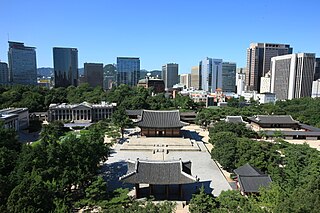
Deoksugung (Korean: 덕수궁) also known as Gyeongun-gung, Deoksugung Palace, or Deoksu Palace, is a walled compound of palaces in Seoul that was inhabited by members of Korea's royal family during the Joseon monarchy until the annexation of Korea by Japan in 1910. It is one of the "Five Grand Palaces" built by the kings of the Joseon dynasty and designated as a Historic Site. The buildings are of varying styles, including some of natural cryptomeria wood), painted wood, and stucco. Some buildings were built of stone to replicate western palatial structures.
Share
Disclaimer Please be aware of your surroundings and do not enter private property. We are not liable for any damages that occur during the tours.
GPX-Download For navigation apps and GPS devices you can download the tour as a GPX file.
